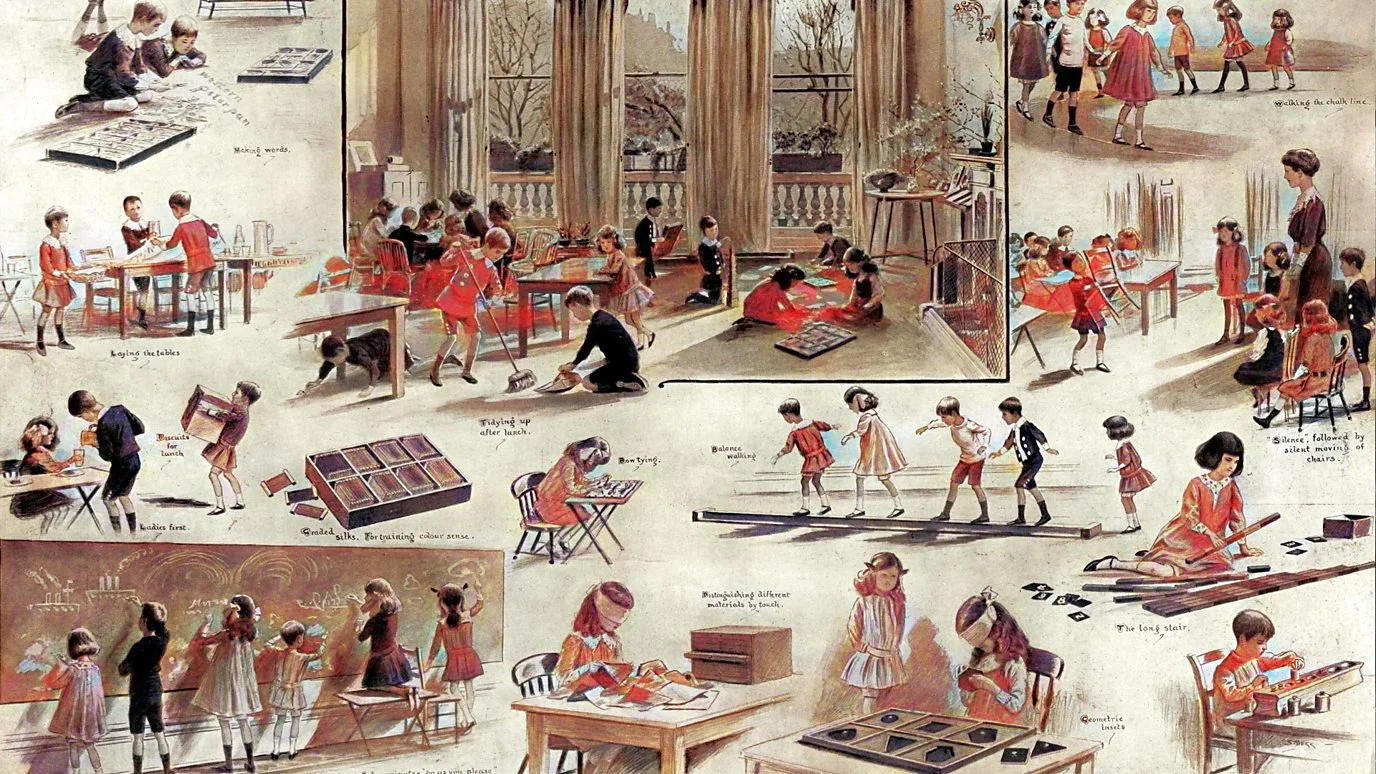
Overview
A brief biography of Maria Montessori
Born in the town of Chiaravalle, in the province of Ancona, Italy, in 1870, Maria Montessori began her career not as an educator, but as the first female physician in Italy. Her clinical observations in her medical practice enabled her to analyze how children learn, and she concluded that they build themselves from what they find in their environment. After returning to the university to study psychology and philosophy, she became a professor of anthropology at the University of Rome.
However, in 1906, motivated by a strong desire to work with children, she gave up both her university chair and her medical practice to work with a group of sixty young children of working parents in the San Lorenzo district of Rome.
Origin of Montessori schools
In 1906, Maria Montessori established a school for sixty children between the ages of two and six years of working parents in the San Lorenzo district of Rome. With these children, she founded the first Casa dei Bambini, or "Children's House." Her observations of the children at this school led her to understand that children have special sensitivities at different stages of their development and that the environment plays a very important factor in their behavior. She designed and provided a “prepared environment” in which children could choose activities that were not only developmentally appropriate, but also of interest to them. As a result, children became very focused in their activities, and learned academic skills with ease and enthusiasm while also developing healthy self-esteem, strong self discipline, and respect for others and for the world.
The Montessori Method
Maria Montessori believed that education should not focus purely on the academics but also be an aid to life. The Montessori Method is a philosophy and system of education that emphasizes the potential of the child and develops this potential by using specially designed teaching materials with the guidance of specially trained teachers.
The Montessori Method recognizes a natural curiosity and a desire to learn in each child. The materials used in the Montessori Method stir this desire and direct this curiosity into an enjoyable learning experience for children. Montessori materials help children to understand what they learn better by associating an abstract concept with a concrete sensorial experience. Through this practice, children are actually learning, and not simply memorizing. Because the Montessori Method stresses that children learn and progress at their own pace, quick learners are not restrained from advancing, and slow learners are not frustrated by their inability to keep up.
“The child can develop fully by means of experience in his environment. We call such experiences ‘work’. Such experiences is not just play…. It is work he must do in order to grow up.”



